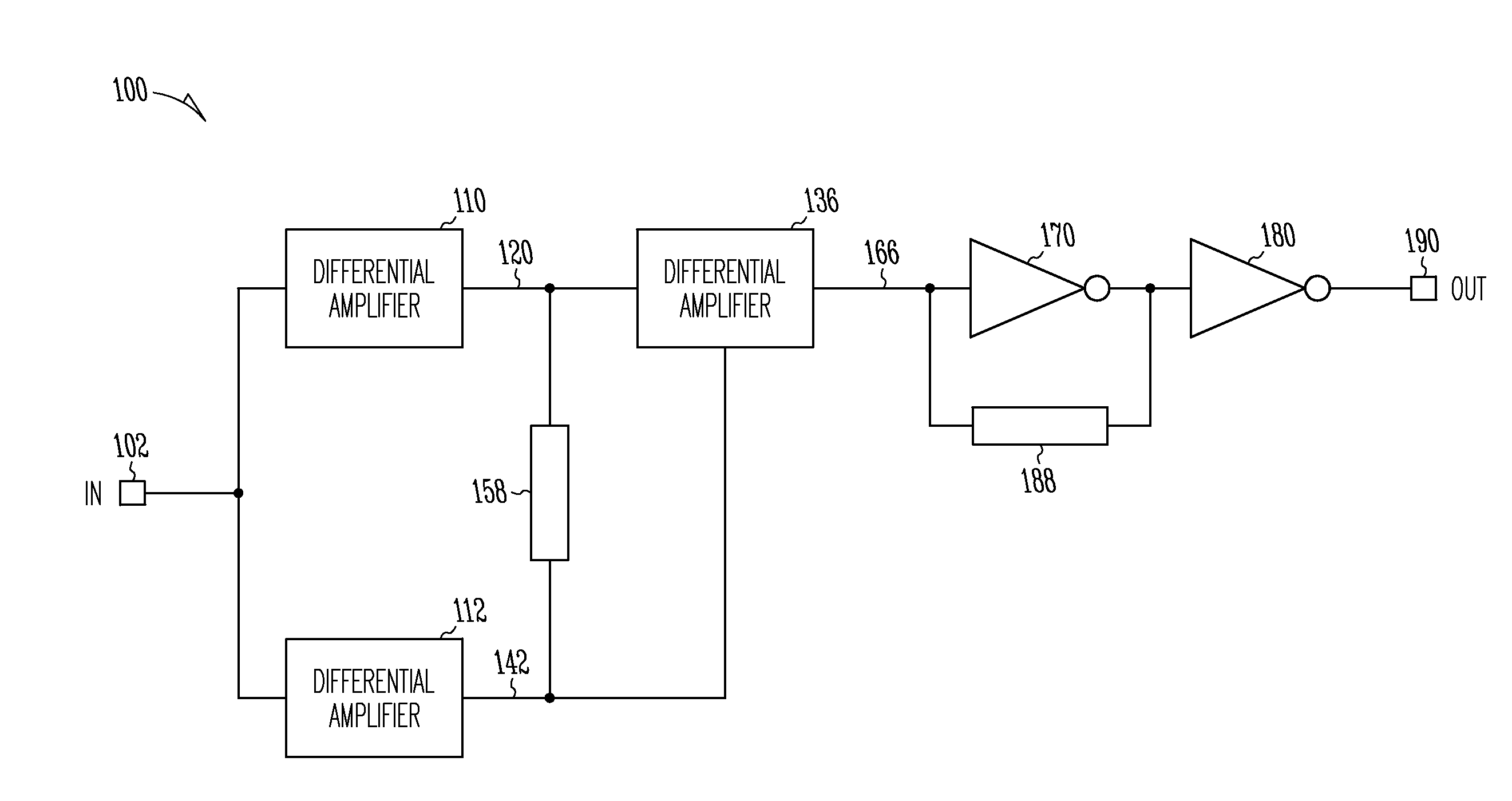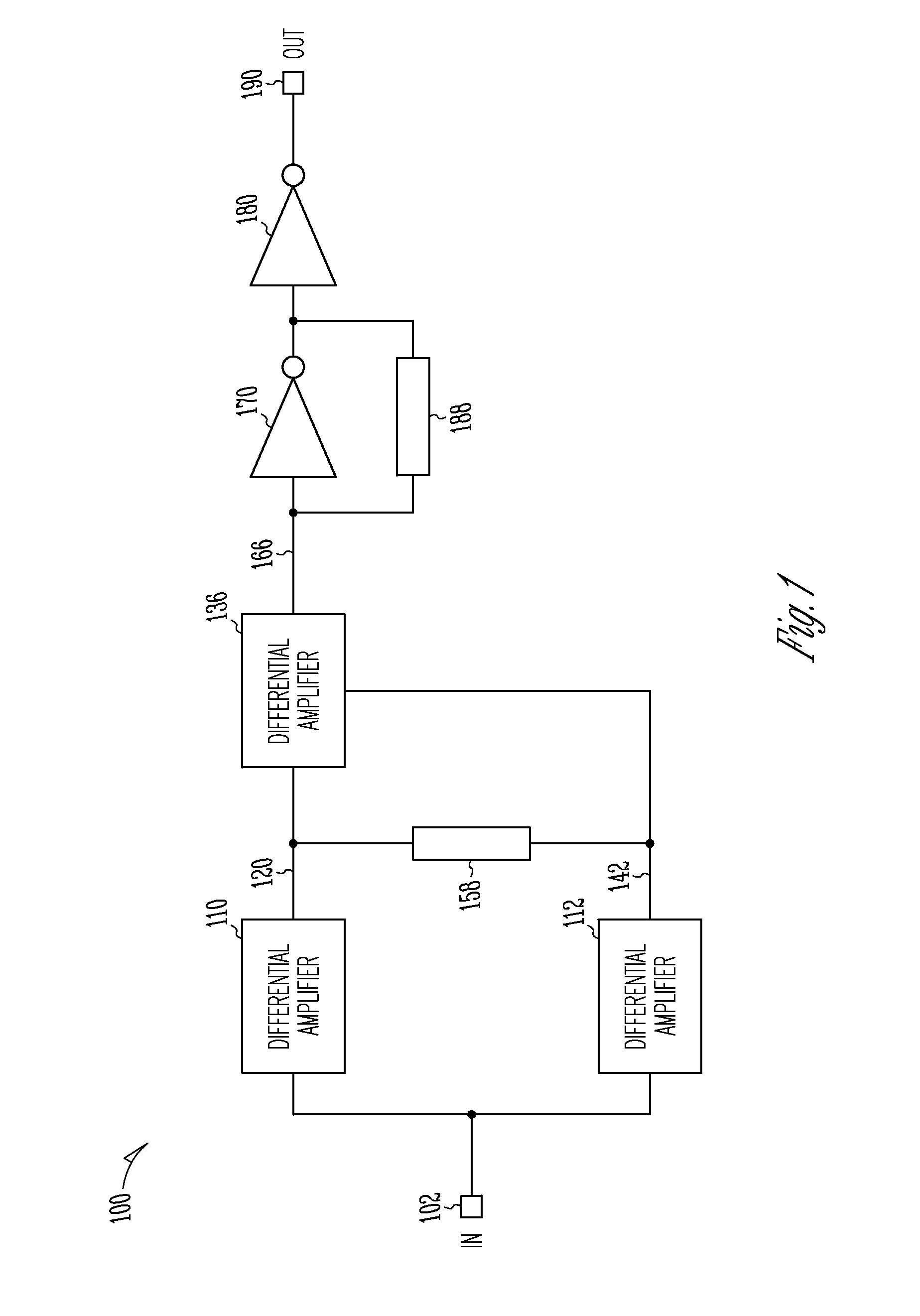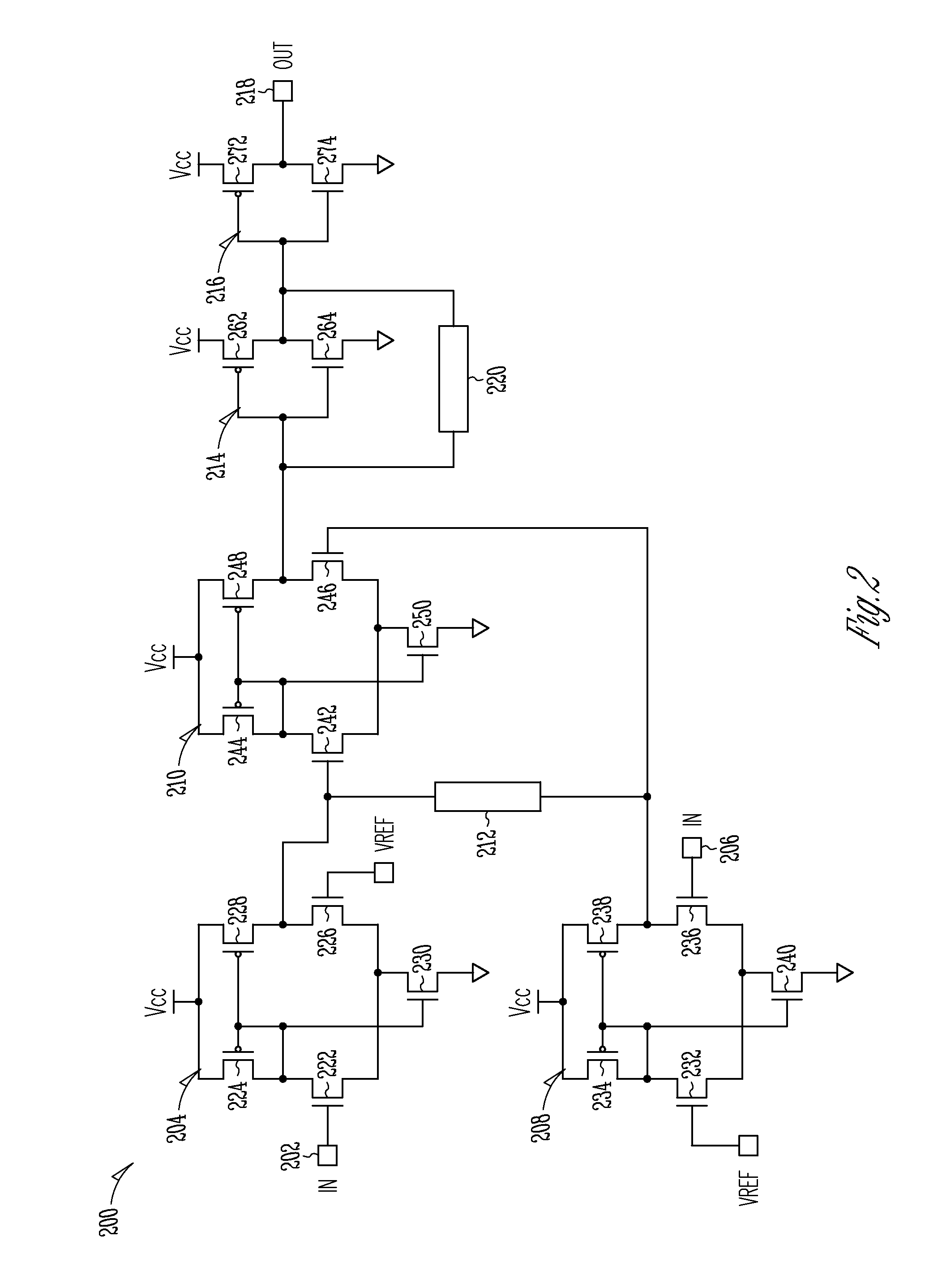Input buffer apparatuses and methods
a buffer and input technology, applied in the field of input buffer apparatuses and methods, can solve the problems of loss of gain, affecting the capacity of mos-based self-biased differential amplifiers, and affecting the layout area and power requirements of substantial size and power requirements,
- Summary
- Abstract
- Description
- Claims
- Application Information
AI Technical Summary
Benefits of technology
Problems solved by technology
Method used
Image
Examples
Embodiment Construction
[0011]For the purposes of this document, an “apparatus” can refer to any of a number of structures, such as circuitry, a device or a system. In this description, a transistor is described as being switched on to assume an activated state when it is rendered conductive by a control gate voltage. The transistor is described as being switched off to assume an inactive state when it is rendered non-conductive by a control gate voltage. Potentials refer to electrical potentials.
[0012]The challenges noted above, as well as others, can be addressed by an apparatus shown in FIG. 1. FIG. 1 is a block diagram of an apparatus in the form of an input buffer system 100 according to various embodiments. An input signal IN is received at an input terminal 102 coupled to inputs of a first differential amplifier 110 and a second differential amplifier 112. The first differential amplifier 110 amplifies the input signal IN to generate a first output signal on a first output line 120 that is coupled t...
PUM
 Login to View More
Login to View More Abstract
Description
Claims
Application Information
 Login to View More
Login to View More - R&D
- Intellectual Property
- Life Sciences
- Materials
- Tech Scout
- Unparalleled Data Quality
- Higher Quality Content
- 60% Fewer Hallucinations
Browse by: Latest US Patents, China's latest patents, Technical Efficacy Thesaurus, Application Domain, Technology Topic, Popular Technical Reports.
© 2025 PatSnap. All rights reserved.Legal|Privacy policy|Modern Slavery Act Transparency Statement|Sitemap|About US| Contact US: help@patsnap.com



